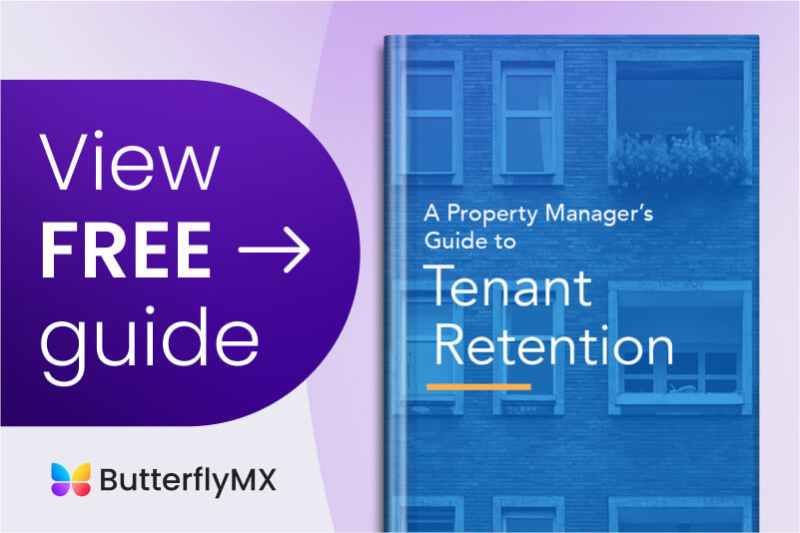Key takeaways
- The benefits of a notice to move out letter include time to find new tenants, legal protection, maintenance planning, and a more efficient move-out process.
- You should make sure to include financial concerns, specific instructions, and a move out checklist in your letter.

Despite your best efforts and no matter how great your property or the number of amenities you provide, tenant turnover is still something you will have to contend with. Alternatively, you might have to make the decision to terminate a tenant’s lease yourself for any number of reasons. As a result, you’ll have to write a notice to move out letter to your tenant. Because this letter will require specific language and instructions, it can be tricky to write.
In this post, we’ll provide a sample notice to move out letter. Next, we’ll review the important information that you must include in your letter to tenants. Finally, we’ll answer some additional questions that you may have concerning your letter.
This post covers:
- Sample notice to move out letter
- Benefits of a notice to move out letter
- How do I write a letter to tell a tenant to move out?
- FAQs
Sample notice to move out letter
Get your free sample letter from a landlord to a tenant(s) with a notice to vacate and move out:
Benefits of a notice to move out letter
A notice to move out letter isn’t just polite. There are many reasons why it’s absolutely necessary.
Benefits of a notice to move out letter include:
- Time to find new tenants. There are currently around 48 million rental units in the US. Rental units go quickly. As a result, you’ll want your tenant to know that you will not be renewing their lease as quickly as possible so you can start showing their unit to new prospective tenants.
- Legal protection. No matter where you live, you have to give your tenants advanced notice before not renewing their lease. By delivering a formal letter, you have a written record that you’ve officially given them notice.
- Prepared tenants. By providing move out instructions, your tenants will know exactly how they should move out (including miscellaneous information, like what to do with their keys).
- Planning. Once you’ve sent your move out letter, you can schedule any maintenance or repairs that the soon-to-be-vacant unit will require.
Discover 8 apartment amenities residents really want:
How do I write a letter to tell a tenant to move out?
While our notice to move out letter template will give you a great starting point, there are a number of important things that you will need to include in the letter. The biggest variety with your letter will depend on your unique property and circumstances.
A good notice to move out letter includes:
Financial concerns
If a tenant owes you back rent, it’s important to mention what they still owe in your letter. Additionally, you will want to mention the tenant’s security deposit and the conditions they have to meet to receive it back. While this information is already in their lease, it’s a good idea to remind them. Also, you should mention anything else financially related within the letter, such as prior rent concessions.
Specific instructions
Your move out letter should include as many concise details as possible.
Make sure to include:
- Dates. This includes the date you sent out your letter and the date they must vacate the property. You can also include dates for a final inspection of the property and when they can expect to get their security deposit back.
- Signatures. Ensure that the letter is signed by you or a property management company representative. Additionally, you should require your tenant to sign and return the lease to you. This allows you to legally prove that they have read and acknowledged your letter.
- Reasons for lease termination. Be sure to include the specific reasons why you are not renewing a tenant’s lease. This is necessary even if their lease’s term is up.
A move out checklist
Once you’ve stated that you want your tenant to move out by a certain date, you should also be sure to include how you want them to move out. If they have signed a long-term lease with you, the move out process might be tricky for them.
A move out checklist should include reminders to:
- Leave their keys and physical access control credentials in a specific location.
- Empty their trash.
- Check their lease for specific cleaning instructions (if any).
- Provide new contact information (if any).
- Switch on mail forwarding to their new address.
- Pay any remaining balances for possible amenities in your building.
- Switch over their utilities.

FAQs
Common questions regarding notice to move out letters include:
- What is proper notice to move out?
- Can a notice to move out letter be emailed?
- What is a notice to vacate?
- What is a lease termination letter?
- How many days’ notice does a landlord have to give to vacate?
What is proper notice to move out?
A notice to vacate letter is the best way to notify a tenant that you don’t want to go through a lease renewal, and that you would like them to move out.
Why? Because a written letter covers you legally and provides the tenant with physical instructions. If you were to provide only verbal notice to your tenant, this might not hold up in court. The tenant may also become confused about when you want them to move and other significant details.
You can always speak to your tenant after sending your notice to move out. Additionally, this is helpful if they have any questions or concerns.
Can a notice to move out letter be emailed?
The best answer to this question depends on whether your tenant is tech-savvy or not and if you have communicated through email in the past. If you and your tenant commonly communicate through email, then emailing a notice to move out letter makes a lot of sense.
A physical letter that is placed in the tenant’s mailbox, slipped under their door, or taped to their door might serve as a better reminder.

What is a notice to vacate?
A notice to vacate is the same as a notice to move out letter.
What is a lease termination letter?
A lease termination letter is sent when a landlord terminates a tenant’s lease before the original lease’s expiration date. A termination of tenancy can occur if a tenant violates their lease.
Alternatively, termination of tenancy can occur if a landlord sells their property or wishes to make extensive modifications and repairs to a tenant’s unit.
How many days’ notice does a landlord have to give to vacate?
The answer to this question relies on what is stated in your lease. If your lease mentions that you have to give 30 to 60 days advanced notice, then you have to abide by your lease. Also, many states have different laws in place for how much notice you have to give before telling a tenant to vacate. It’s good to protect yourself legally by checking with these local laws just in case anything has changed or if there is an error with your lease.
Additionally, it’s a good idea to give your tenant as much notice as possible. This will grant them more time to plan their transition out of your property and find somewhere else to live.







